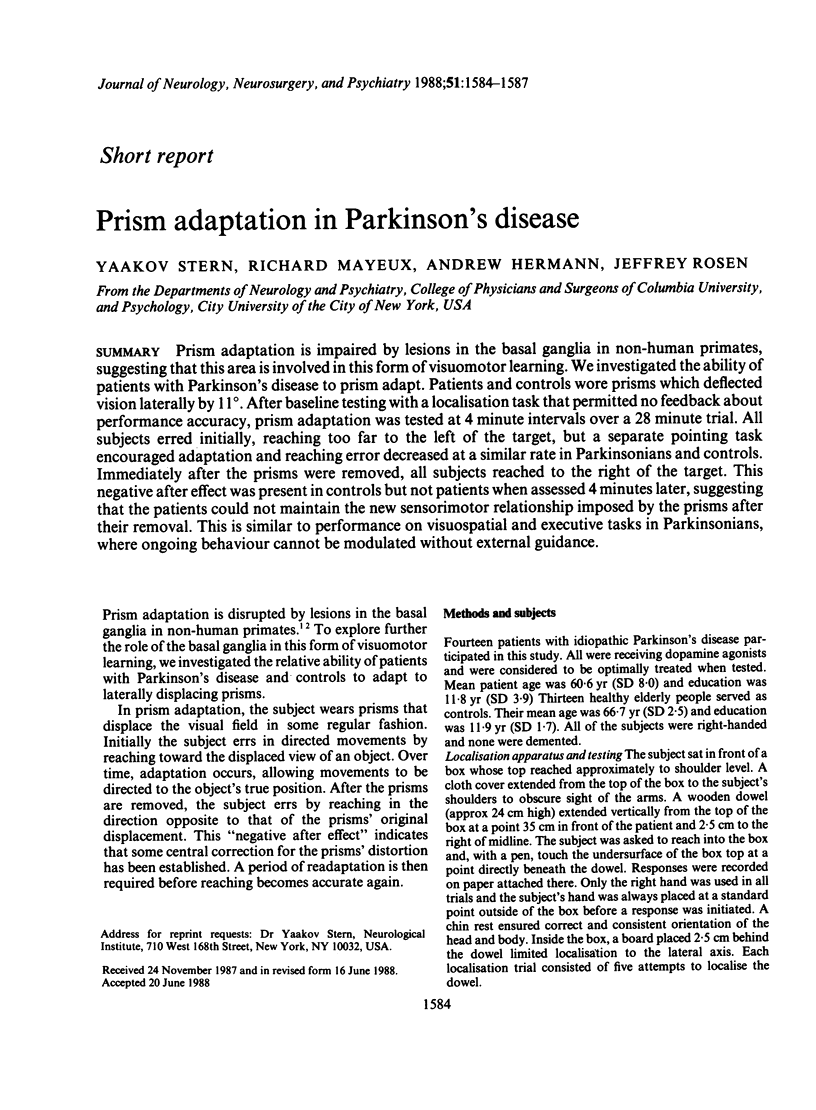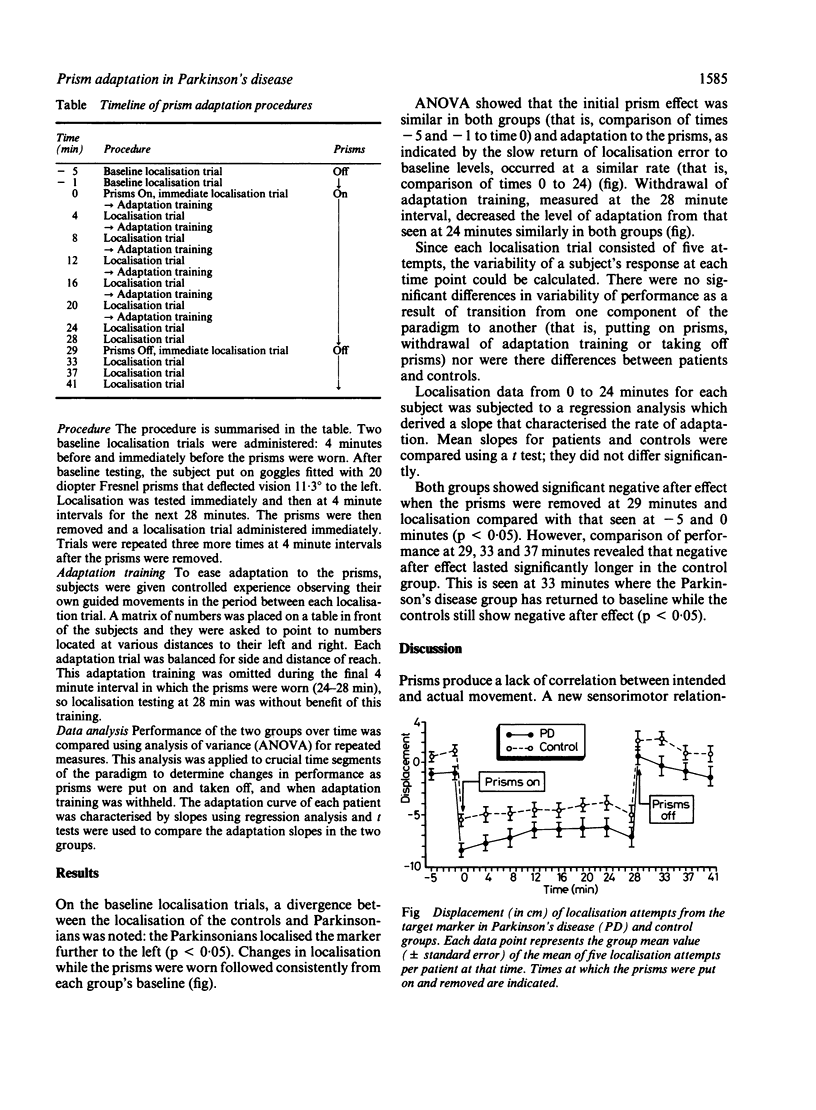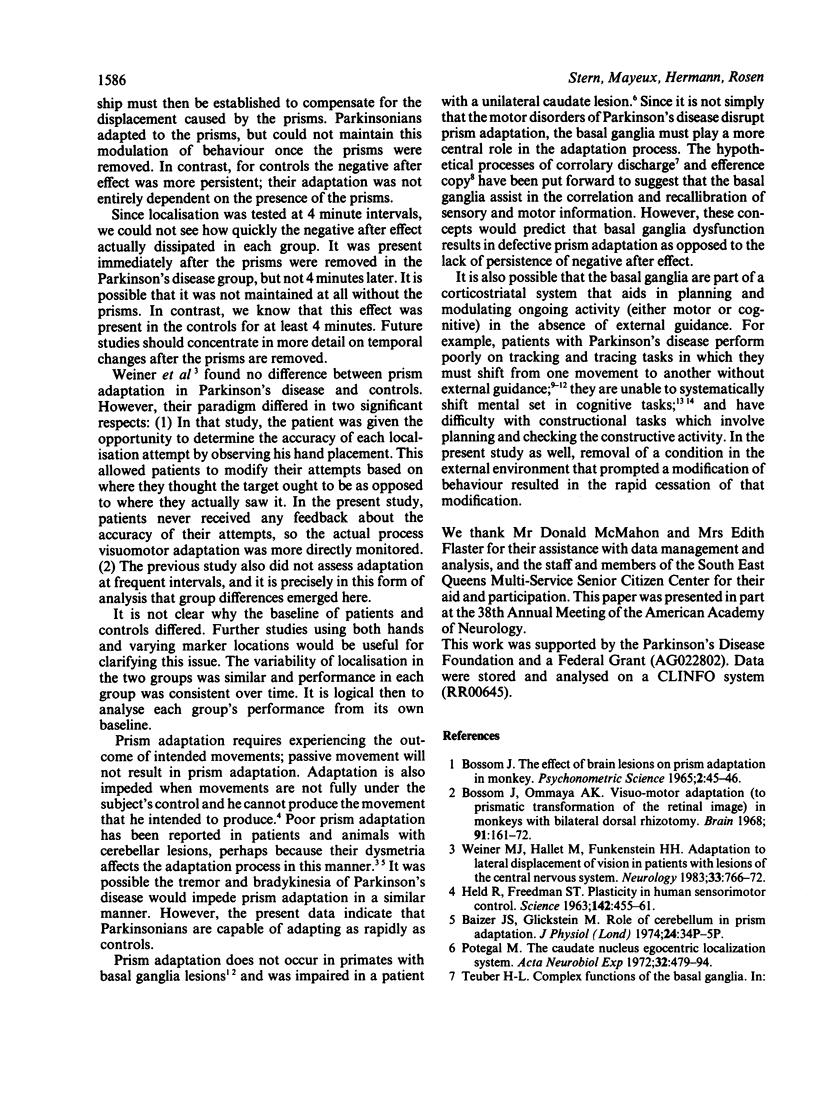Abstract
Prism adaptation is impaired by lesions in the basal ganglia in non-human primates, suggesting that this area is involved in this form of visuomotor learning. We investigated the ability of patients with Parkinson's disease to prism adapt. Patients and controls wore prisms which deflected vision laterally by 11 degrees. After baseline testing with a localisation task that permitted no feedback about performance accuracy, prism adaptation was tested at 4 minute intervals over a 28 minute trial. All subjects erred initially, reaching too far to the left of the target, but a separate pointing task encouraged adaptation and reaching error decreased at a similar rate in Parkinsonians and controls. Immediately after the prisms were removed, all subjects reached to the right of the target. This negative after effect was present in controls but not patients when assessed 4 minutes later, suggesting that the patients could not maintain the new sensorimotor relationship imposed by the prisms after their removal. This is similar to performance on visuospatial and executive tasks in Parkinsonians, where ongoing behaviour cannot be modulated without external guidance.
Full text
PDF



Selected References
These references are in PubMed. This may not be the complete list of references from this article.
- Angel R. W. Efference copy in the control of movement. Neurology. 1976 Dec;26(12):1164–1168. doi: 10.1212/wnl.26.12.1164. [DOI] [PubMed] [Google Scholar]
- Bloxham C. A., Mindel T. A., Frith C. D. Initiation and execution of predictable and unpredictable movements in Parkinson's disease. Brain. 1984 Jun;107(Pt 2):371–384. doi: 10.1093/brain/107.2.371. [DOI] [PubMed] [Google Scholar]
- Bossom J., Ommaya A. K. Visuo-motor adaptation (to prismatic transformation of the retinal image) in monkeys with bilateral dorsal rhizotomy. Brain. 1968 Mar;91(1):161–172. doi: 10.1093/brain/91.1.161. [DOI] [PubMed] [Google Scholar]
- Flowers K. A., Robertson C. The effect of Parkinson's disease on the ability to maintain a mental set. J Neurol Neurosurg Psychiatry. 1985 Jun;48(6):517–529. doi: 10.1136/jnnp.48.6.517. [DOI] [PMC free article] [PubMed] [Google Scholar]
- Flowers K. Lack of prediction in the motor behaviour of Parkinsonism. Brain. 1978 Mar;101(1):35–52. doi: 10.1093/brain/101.1.35. [DOI] [PubMed] [Google Scholar]
- HELD R., FREEDMAN S. J. PLASTICITY IN HUMAN SENSORIMOTOR CONTROL. Science. 1963 Oct 25;142(3591):455–462. doi: 10.1126/science.142.3591.455. [DOI] [PubMed] [Google Scholar]
- Lees A. J., Smith E. Cognitive deficits in the early stages of Parkinson's disease. Brain. 1983 Jun;106(Pt 2):257–270. doi: 10.1093/brain/106.2.257. [DOI] [PubMed] [Google Scholar]
- Potegal M. The caudate nucleus egocentric localization system. Acta Neurobiol Exp (Wars) 1972;32(2):479–494. [PubMed] [Google Scholar]
- Stern Y., Mayeux R., Rosen J., Ilson J. Perceptual motor dysfunction in Parkinson's disease: a deficit in sequential and predictive voluntary movement. J Neurol Neurosurg Psychiatry. 1983 Feb;46(2):145–151. doi: 10.1136/jnnp.46.2.145. [DOI] [PMC free article] [PubMed] [Google Scholar]
- Weiner M. J., Hallett M., Funkenstein H. H. Adaptation to lateral displacement of vision in patients with lesions of the central nervous system. Neurology. 1983 Jun;33(6):766–772. doi: 10.1212/wnl.33.6.766. [DOI] [PubMed] [Google Scholar]


